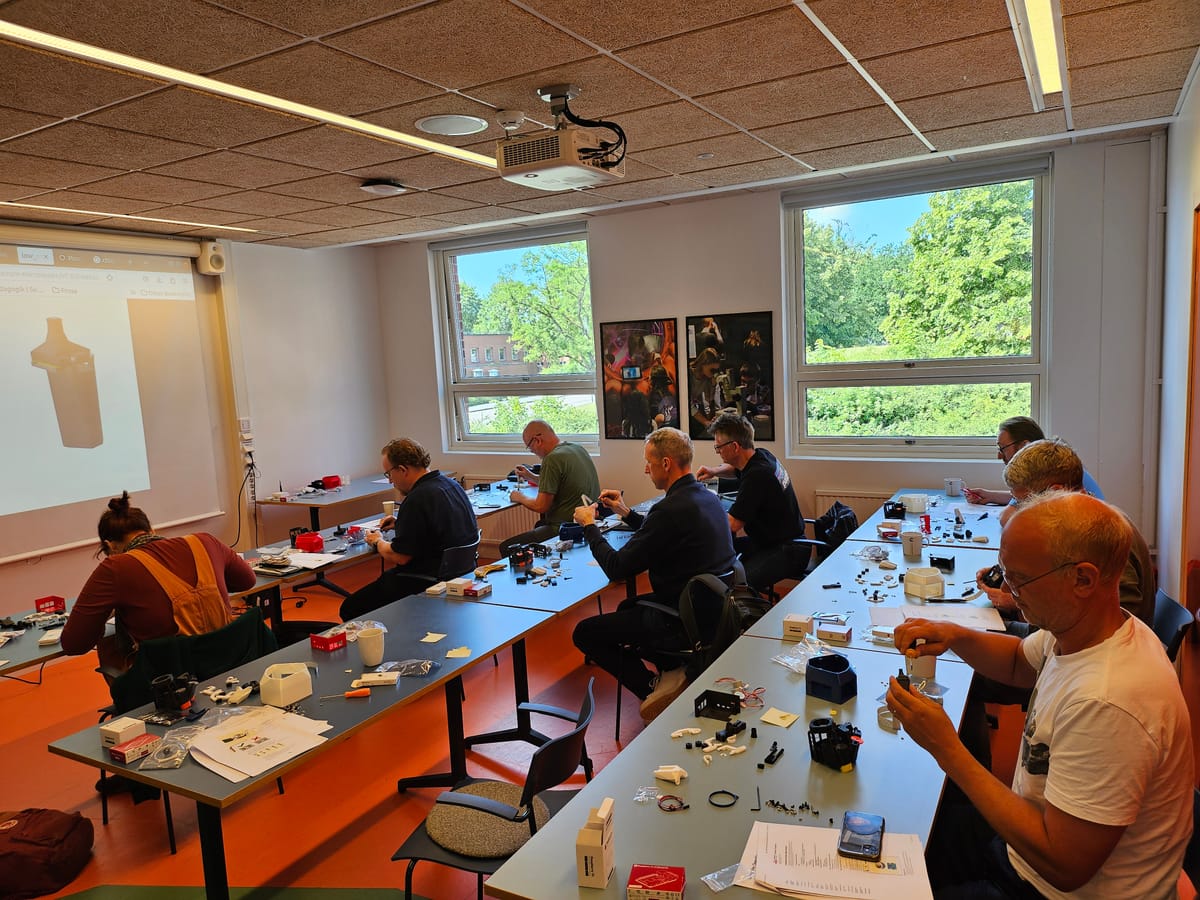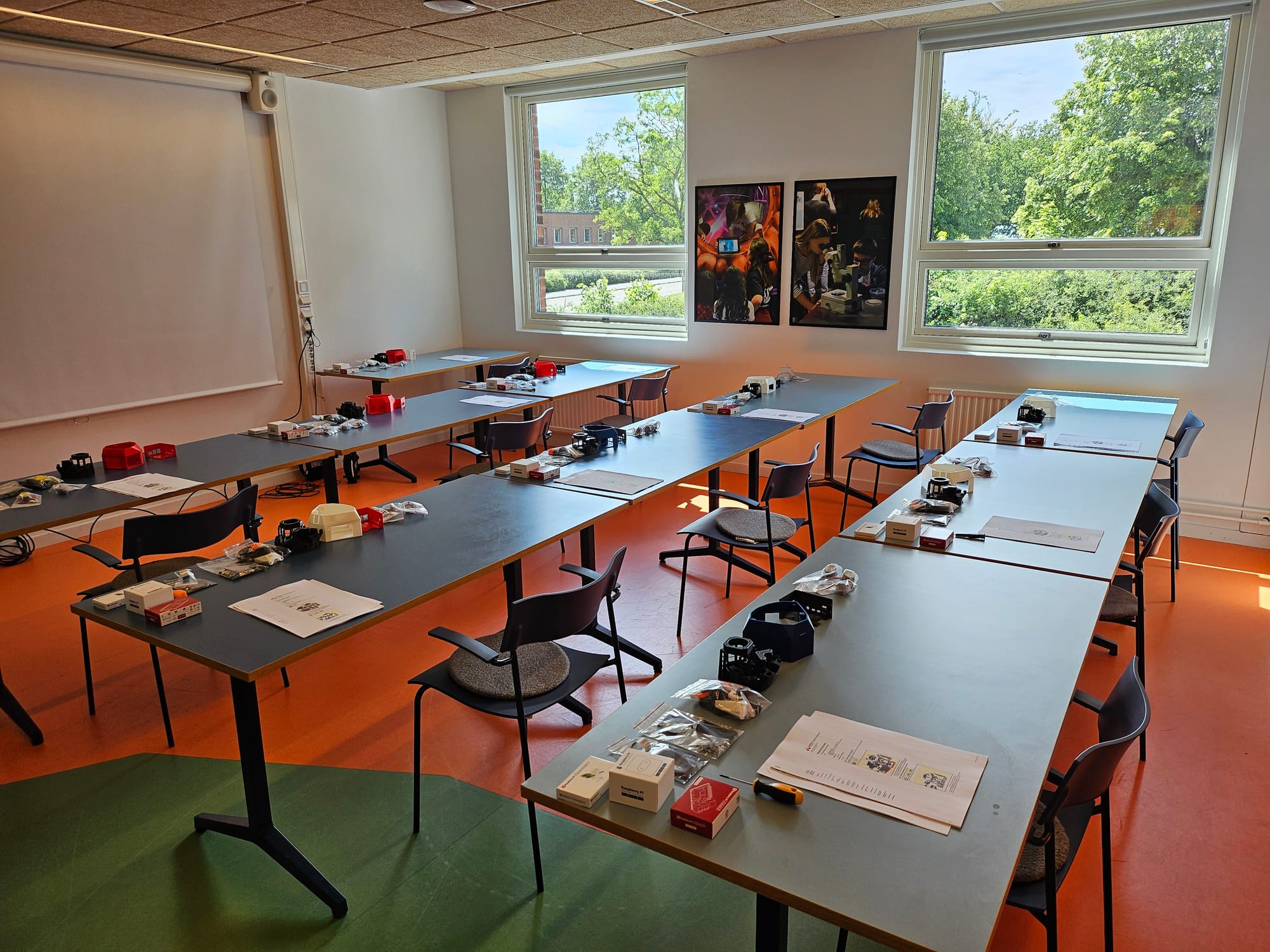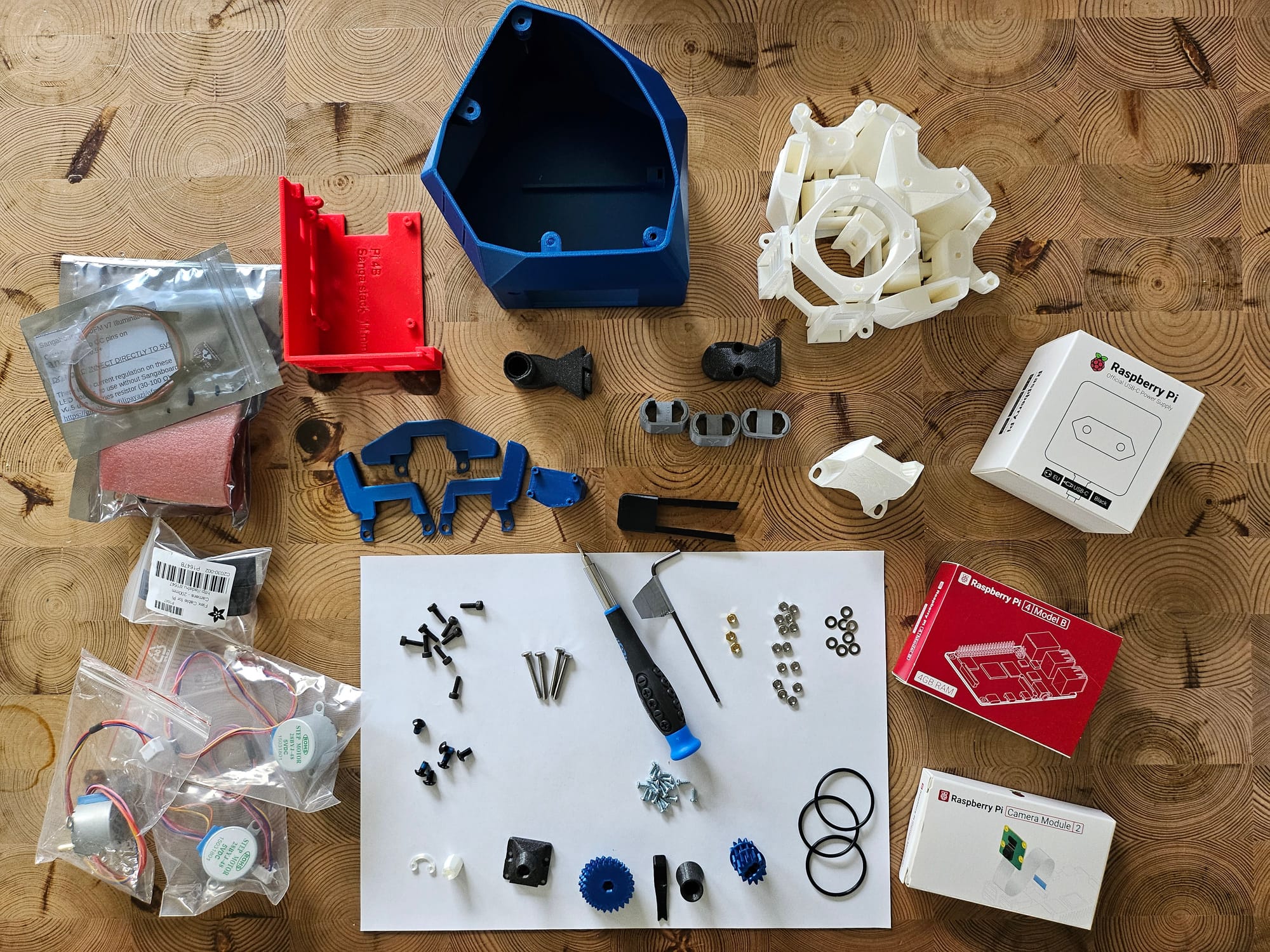Building Open Science Hardware with Secondary School Teachers
In this post, we learn more about an educational workshop for secondary school teachers that helped bring open science hardware to new audiences.

Written by Per Wilhelmsson and edited by Brianna Johns for the Open Science Shop Newsletter
In a previous blog post, Frank Bentum raised the issue that in Africa, most people have “limited or no familiarity with the concept of open science, open hardware, and open scientific instrumentation". In Sweden, we also face this same problem, which highlights that spreading knowledge about these contemporary concepts is of top priority.
One great way of spreading knowledge is through an educational workshop where the participants are enabled to further share their own knowledge. Below, I will describe my experiences hosting a workshop such as this, with the hope it can be useful to anyone interested in similar activities.
Hosting a Workshop
The workshop was a collaboration between the local science center (Vattenhallen) and myself, a freelance scientist and microscope enthusiast who uses open science instruments and the OpenFlexure Microscope (OFM) to elevate science and education. It was given as a one-time part of the science center’s selection of educational activities, to which teachers of mid-secondary school (teaching students of age ~15) can apply to participate.
The workshop aimed to promote open science and help teachers develop capacity and skills to build and use open science instruments. In addition, the workshop aimed to introduce participants to a specific application, exploring OFM’s use in local aquatic monitoring and documentation.
The workshop costs were shared so that the teachers could bring their microscopes back to school to use in their classrooms. The participant slots were quickly filled with teachers from different schools in the nearby area, with additional teachers asking to be put on a reserve list. The only prerequisite for teachers was that they bring a laptop with an ethernet cable, and no prior knowledge or read-up was required.
The science centre provided the facilities, and one of their in-house engineers helped out with issues throughout the workshop. He had no prior experience with the OFM, so I helped him assemble one a few days beforehand, which gave him sufficient insights to assist the workshop participants.

Workshop proceedings
The workshop consisted of 8 participants and lasted from 9 am to 5 pm.
Preparational work
Preparational work ahead of the workshop included the following:
- Collect printed/mechanical and electronic pieces (10-20% extra in case of accidents/malfunctions)
- Collect tools (Allen key + PH0-screw + gripper + printed tools + oil)
- Prepare printed versions of Assembly Instructions
- Prepared SD-cards (Flashed img + installation.) Don’t forget to hand out usernames and passwords!
I also provided the participants with extra material via a dropbox-link, like a simplified user manuals for operating the microscope.
9:00am: Intro
The workshop started with a presentation introducing the concept of open science instruments, the OFM, and its usefulness. We also shared the specific algae documentation application.
10:00am: Building the OFM

Each participant had all required parts prepared for them as well as a printed version of the assembly instructions. I also built a microscope in parallel so that I could easily demonstrate useful grips (e.g. assembly of actuators). We used a projector to stream the official assembly instructions and aimed for an approximate 4 hour calm build pace going through each part step by step. The participants were encouraged to work at their own pace in case they felt they wanted to build ahead. Participants with laptops were recommended to have the web-instructions open.
Thanks to the well-written official assembly instructions, the building process went quite smoothly. The only real issue was a faulty Pi camera, which was replaced, highlighting the need to keep some spare parts when hosting workshops such as this.
In retrospect, we could have done a few things to save time. For instance, we did not want to touch the participants builds too much since that takes away the feeling of having built it yourself; we mainly gave instructions from the side. Having two people lead the workshop helped out a lot, carrying out the workshop alone with 8 people would probably have prolonged it another 1-2 hours. So, for this crowd and setup, I think one person can handle around 5 - 6 builders.
14:00: Calibration and operating the OFM
Once everyone had their microscopes built, we proceeded with calibrations and familiarising ourselves with how to operate them (it is important that everyone brings a laptop with an ethernet cable), which took approximately 1 hour. For this, I prepared a simplified cheat sheet summarising some of the microscopes' functionalities.
15:00: Specific application (aquatic monitoring)
This part was dedicated to my specific citizen/student-science application that I have been developing over the last few years. This initiative stems from the need for more microscopic image data to better understand the biogeography of microscopic organisms. Using the OFM in an educational environment to look at aquatic samples and while sharing your data will contribute to our collective understanding and bring great educational and scientific value.
The rest of the day was therefore dedicated to looking at aquatic samples and informing participants on how to upload image data. This concept has been made possible through collaborations with the local online resource Nordic Microalgae, being maintained by the Swedish Meteorological and Hydrological Institute and Swedish Biodiversity Data Infrastructure (SBDI). In turn, SBDI is a part of the Global Biodiversity Information Facility, ensuring the collected data ends up in relevant repositories.
Some lessons learned
The building part and application part (be it looking at algae or any microscope activity) of the workshop should have been split into separate days. Since the application part depends on participants having their microscopes ready, we didn’t start looking at algae until five hours into the workshop. In this case it would have been better with a separate session dedicated to application.
Table size, accessibility, and visibility are also good to keep in mind when hosting these kinds of workshops. The more table space for each participant, the better. Each participant having their own table is preferable if possible. Our room was not large enough to fit the tables so as to give more space when jumping between participants. Organizing desks into tight rows (as you can see in the image above) are not recommended.
Outcome/results
Everyone was introduced to the concepts of open science, open hardware and open scientific instrumentation and got the opportunity to look at some algae, in addition to being left with a calibrated microscope. Workshop goal achieved!
The participants were very impressed by the OFM and the empowering experience of building one. There was a shared excitement about bringing the microscopes back to their respective schools, co-workers, and classrooms. All of the teachers were very inspired by their acquired knowledge of open science instruments and saw a great potential in using open science instruments in their teaching. There was also a clear interest in using the microscope to look at aquatic samples and sharing the data.
Insights on how to meet the educational audience, and marketing approach to educators
The usage of the OFM in an educational environment can take on many shapes and forms. Building an OFM can serve as a great way for student’s to have their “own choice”- a project that stimulates eager minds in science and technology. Simply exchanging current school microscope equipment with more versatile and cost-effective alternatives with great future open-development potential, such as the OFM, would also be of great interest, according to participating teachers. Providing instructions on how to further carry out workshops themselves would provide a great growth of knowledge, in addition to creating more OFMs.
This workshop highlights interesting routes and challenges in helping educational institutions implement open scientific instrumentation. But, due to the current situation, as raised by Frank Bentum, of “limited or no familiarity” about open-source alternatives, there is first a fundamental need to spread more awareness that these most contemporary open-source alternatives even exist. To reach a level where educational institutions (public and private) feel confident investing in open scientific instruments, their users (teachers/students) first need to know about them and be shown examples of their usefulness.
Therefore, the focus is to carry out more workshops in Sweden aimed at teachers and to refine and develop more tailored instructions/educational material for those who are further interested in looking at aquatic samples and sharing their data.
More information with regards to OFM workshops can be found on the OpenFlexure forum under the workshop tag.
Authors
Per Wilhelmsson is a freelance scientist with a background in plant evolution and development (Bioinformatics PhD). He is a microscope enthusiast who uses open science instruments and the OpenFlexure Microscope (OFM) to elevate science and education. You can contact Per here.